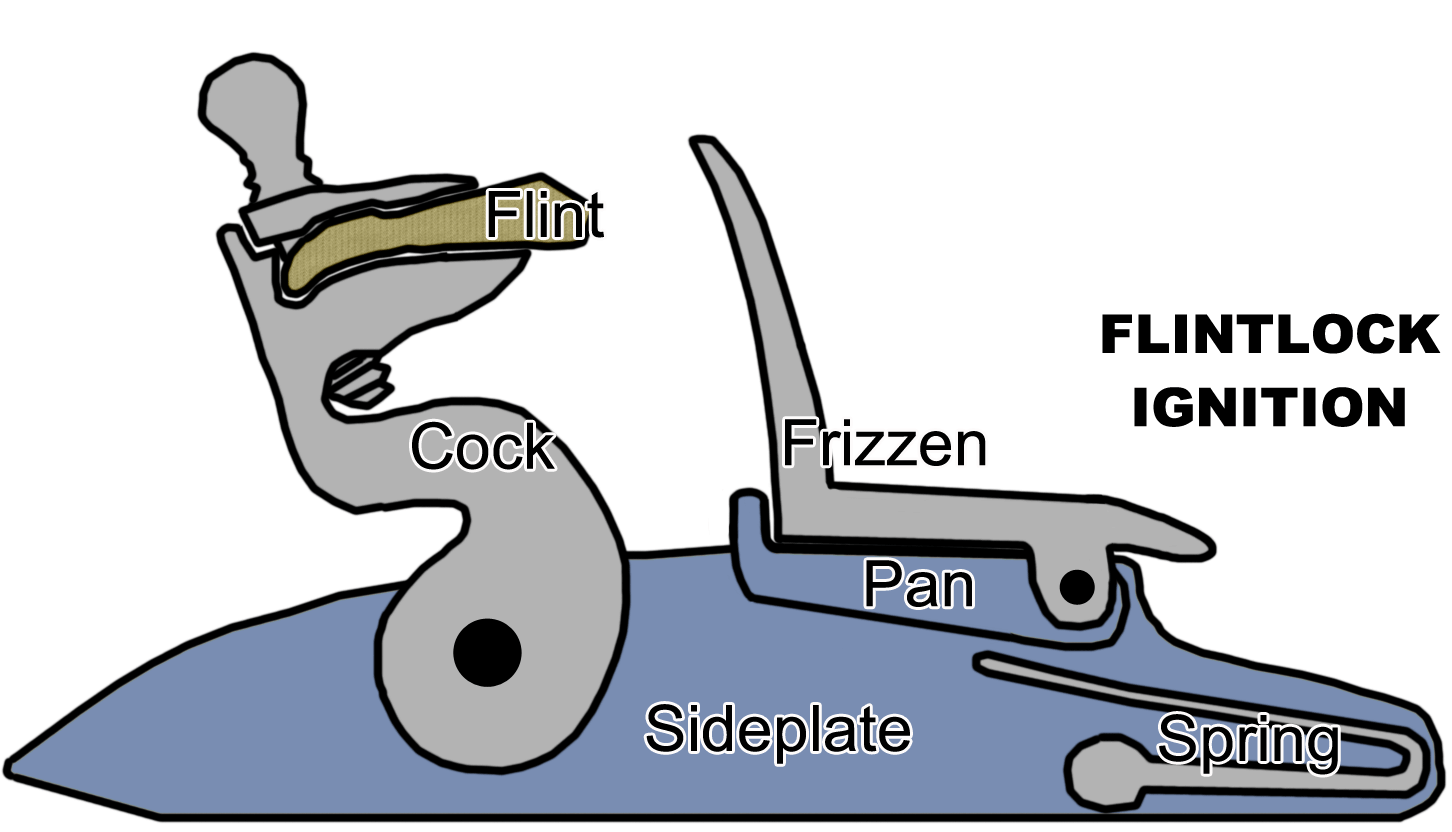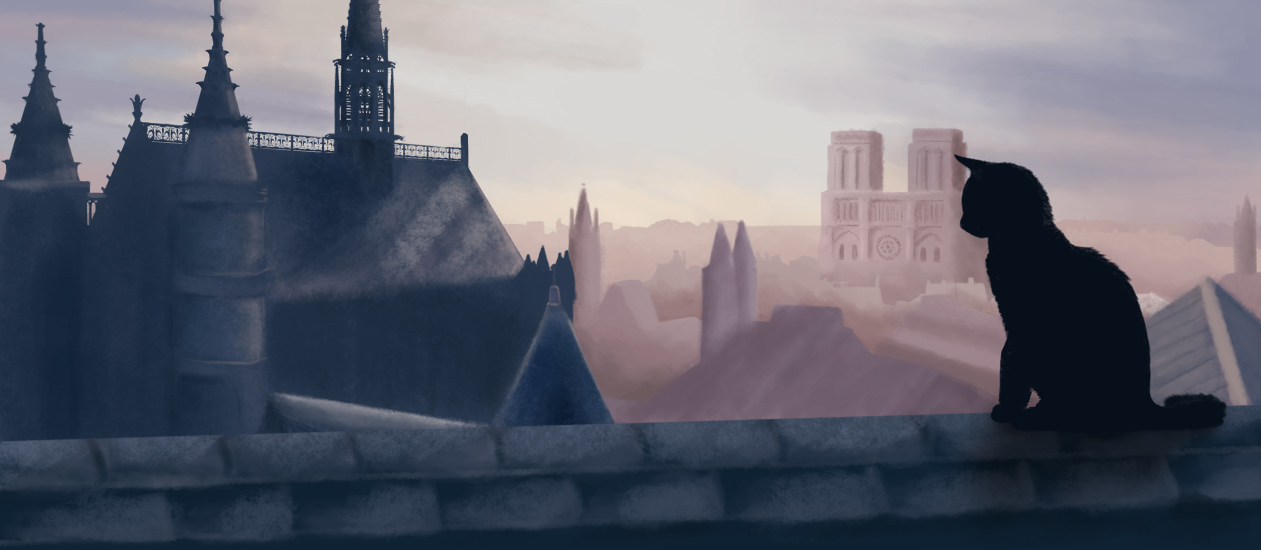Flashgun
Guns ruin everything. Used to be, you needed years of training to use a weapon and now any bloke off the street can pick one up and kill a thug. And don't get me started on flashguns! Years of training to learn Babelian, or you could just pick up a flashgun with the formula already inscribed on the stone and lob a hunk of lead at someone! There's no discipline, no style.
Black powder is dirty. It gets all over one's hands, it leaves a smelly cloud in the air, and it smears a man's lips when eh tears open an ammunition packet with his teeth. It is not the weapon for a civilized man.
Flashguns are the alternative. Using a burst of vesanmer, they fire a lead ball with no mess, no smoke, and no mucking about with powder.
Modern flashguns are made similarly to flintlock guns. They have the same basic body and an untrained eye wouldn't be able to tell them apart from a distance. The main difference is that a flashgunt has a compartment built into the side, which opens with a small steel door. This is where the pathstones - typically the size of a man's thumb with handheld guns - is fitted in. Not just any pathstone will do; the crystal must be inscribed with the formula telling the energy contained what to do upon release. A non-inscribed stone could work in a pinch, but carries the risk of exploding in the user's face.
The pathstone is inserted between a vertical loop of copper wire. Each end of the loop is connected to the barrel to release the energy into the lead ball. It is important not to touch the wire with the stone, as that would cause energy to be released. A simple brush is harmless, but pushing it against the wire would essentially fire the gun. Even with no ball in the barrel, the burst of energy released is dangerous to anything it's pointed at, plus would waste one of your shots.

Mechanism of a conventional flintlock by BBODO
When the pathstone is secured within the gun, the user drops a lead ball down the barrel. Loading a flashgun is much simpler than loading a conventional flintlock, as it is unnecessary to fit powder in with the ball.
Once the ball is in place, the gun can be fired. The user pulls the trigger, which causes the cock of the gun to smash down onto what would be the pan on a flintlock. A flashgun has an open space there instead, allowing the cock to press the wire down onto the pathstone. Energy is released into the wire, which channels it to the barrel of the gun and fires the ball.
The Gun
The Balls
The Pathstones
A new lead ball needs to be loaded before firing again, but the pathstone has enough energy to fire about six shots.
Six is not a hard and fast number - more than a few battles have been won or lost based on someone thinking they had one more shot than they did. Most users change their stones after the fifth shot, not willing to risk the sixth one not working.
To be on the 6th ball
The uncertain nature of the 6th shot of a flashgun has led to this idiom, which means that one has run out of options and is throwing everything into a last-ditch effort with no guarantee it will work.The only sound a flashgun makes when being fired is the rattle of the lead ball bouncing against the barrel on its way out. They produce no smoke like gunpowder weapons; the only visual indication that a flashgun has been fired is the quick flash of light seen within the barrel and through the trigger mechanism. The colour of the light depends on the colour of the stone inside. White is the most common, resulting from colourless quartz.
History
Flash Cannons
Flashguns evolved out of flash canons, which were invented in Chosun in the first century BC. The basis of a flash cannon was a long metal tube with an iron ball inside. When the tube was connected to the stream of vesanmer flowing along the path via a copper cable, the surge of energy caused the ball to launch out at high speeds.
The original flash cannons could only operate along the pathways of the dead, as pathstones had not yet been invented to transport the energy produced away from the ghosts generating it. The Chosunese military used long wires of copper to get their canons as far from the paths as possible, but the army was still fundamentally limited by location of the paths.
Gunpowder
Around AD 850, gunpowder was invented by Han alchemists within Chosun (During the Gyeongpo dynasty). It appeared that gunpowder would replace flash cannons, as it could be used anywhere. The loud bang and smoke given off was seen as an unfortunate drawback compared to flash cannons, but their portability made them worthwhile.
By the 11th century, gunpowder was the military weapon of choice with flash cannon technology being relegated to novelty items. Any battle that happened around a path still brought them out, as gunpowder cannons couldn't compete with their ability to be reload within a minute and fire silently, but gunpowder was more practical for an army on the move.
Introduction of Pathstones
In the 13th century, gunpowder arrived in the Arab world and Europe via the Silk Road. Syrian chemist and engineer Hasan al-Rammah experimented with gunpowder to devise machines of war. Pathstones had been used throughout the Arab world since the 11th century, but had not had any military purpose. Al-Rammah was the first to look at these two great inventions and consider combining them.
Al-Rammah looked to the ancient Chosunese flash cannon for inspiration and invented a cannon that operated similarly, except it was connected to a large crystal at the base of the tube. When the operate pressed a switch to bring a copper wire into contact with the crystal, a burst of vesanmer allowed it to shoot the iron ball.
Over the next few centuries, flash cannon technology would gradually get smaller and more portable. The huge burst of energy needed meant a pathstone could only fire two or three balls before needing to be replaced, which was inefficient during a battle. A smaller ball needed less energy to be fired, so the cannons gradually turned into handheld muskets with a fist-sized pathstone in their base. These became smaller still, eventually turning into the handheld pistol, which can fire five or six lead balls before replacing the thumb-sized crystal.
Gunpowder continued to be developed alongside flash cannons - or flash guns, as they are more generally known now. Gunpowder was messy, loud, but less expensive and continued to dominate the battlefield. Flash guns were most often used by officers, during sneak attacks or ambushes, or during any battle near a death pathway that could provide an endless stream of vesanmer.
Access & Availability
Flash guns are expensive. The actual device itself is as readily available as any flintlock, but the steady supply of pathstones that have the correct formula inscribed upon them makes the technology inaccessible to the common classes. The nickname 'Flashers' is given to military officers by enlisted men in France, highlighting the division between flintlock and powder among the common enlisted soldiers and expensive flash guns among the officers.
Components
The gun itself is made in the same fashion as a flintlock gun. They typically have polished wooden handles and a steel barrel. Flashguns, which are more expensive to begin with, often have more ornate artistry on their handles, or engraved patterns on the metal components. Because they don't use gunpowder, they are less messy and don't need to be cleaned as often.
Flashguns use the same lead balls as comparable flintlock weapons. There are merchants who sell "specialty flash balls" that allegedly react to the vesanmer to shoot truer and farther, but there is no evidence that the balls from these packages are any different. The sale of such balls is illegal in many areas as it's a scam, but a blackmarket still exists for people who are both rich and gullible and believe they were banned for how lethal they are.
A pathstone needs to be inscribed with the correct formula before it can be used. The formula is best written by a trained Alzamatrist as a simple spelling mistake might make the gun explode. All militaries have Alzamatrists built in to provide this service. Cheaper stones inscribed by amateurs are common on the black market.
Most people carry a pouch of fresh stones to reload the gun, and a separate pouch to place used-up stones to be recharged later. Particularly wealthy individuals sometimes toss the used up stones aside as a display of conspicuous consumption.
These are the same people who like to use emeralds or other rare gems to fire flashguns. The stones dont' function any differently, but the green flash from an emerald-powered gun announces the wealth of the holder.
Most people carry a pouch of fresh stones to reload the gun, and a separate pouch to place used-up stones to be recharged later. Particularly wealthy individuals sometimes toss the used up stones aside as a display of conspicuous consumption.
These are the same people who like to use emeralds or other rare gems to fire flashguns. The stones dont' function any differently, but the green flash from an emerald-powered gun announces the wealth of the holder.


